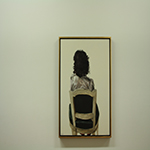Euroacademia Conferences
 Europe Inside-Out: Europe and Europeanness Exposed to Plural Observers (9th Edition) April 24 - 25, 2020
Europe Inside-Out: Europe and Europeanness Exposed to Plural Observers (9th Edition) April 24 - 25, 2020 Identities and Identifications: Politicized Uses of Collective Identities (9th Edition) June 12 - 13, 2020
Identities and Identifications: Politicized Uses of Collective Identities (9th Edition) June 12 - 13, 2020 8th Forum of Critical Studies: Asking Big Questions Again January 24 - 25, 2020
8th Forum of Critical Studies: Asking Big Questions Again January 24 - 25, 2020 Re-Inventing Eastern Europe (7th Edition) December 13 - 14, 2019
Re-Inventing Eastern Europe (7th Edition) December 13 - 14, 2019 The European Union and the Politicization of Europe (8th Edition) October 25 - 26, 2019
The European Union and the Politicization of Europe (8th Edition) October 25 - 26, 2019 Identities and Identifications: Politicized Uses of Collective Identities (8th Edition) June 28 - 29, 2019
Identities and Identifications: Politicized Uses of Collective Identities (8th Edition) June 28 - 29, 2019 The European Union and the Politicization of Europe (7th Edition) January 25 - 26, 2019
The European Union and the Politicization of Europe (7th Edition) January 25 - 26, 2019 7th Forum of Critical Studies: Asking Big Questions Again November 23 - 24, 2018
7th Forum of Critical Studies: Asking Big Questions Again November 23 - 24, 2018 Europe Inside-Out: Europe and Europeanness Exposed to Plural Observers (8th Edition) September 28 - 30, 2018
Europe Inside-Out: Europe and Europeanness Exposed to Plural Observers (8th Edition) September 28 - 30, 2018 Identities and Identifications: Politicized Uses of Collective Identities (7th Edition) June 14 - 15, 2018
Identities and Identifications: Politicized Uses of Collective Identities (7th Edition) June 14 - 15, 2018
Capturing the Ordinary? Irena Blühová and Photographic Modernism in Slovakia 1926-1936
-
-

-
Presentation speakers
- Julia Secklehner, The Courtauld Institute of Art, London
- Download presentation
Abstract:
Irena Blühová was one of the first female Slovak photographers who came into prominence in the interwar years with socio-critical images, produced in connection with her activities for the Czechoslovak Communist Party. She also participated in the dissemination of a modernist photographic framework in Slovakia, which today has largely fallen into obscurity. By looking at the different stages in Blühová’s short but prolific photographic career, this paper aims to reassess her work in light of the changes it underwent in the decades preceding the Second World War. Blühová’s training at the Dessau Bauhaus is an important aspect of this, as is her engagement with gendered conventions of the photographic medium, which first emerges in her Bauhaus photographs and reappears in the years thereafter. Another hitherto untreated aspect of her work relates to the fact that Blühová’s socio-political imagery underwent a change after the Bauhaus in what appears to be a slow move away from socio-critical images of manual workers und the disadvantaged towards much gentler depictions of Slovak life. Seeing her work as a document of political agitation within the socialist spectrum, as has tended to be the norm to date, does not cater for these changes. In an attempt to overhaul this, this paper assesses the reasons why Blühová could have taken the step to decrease the socio-political angling of her work in favour of more ethnographic motifs- despite the fact that she remained an important activist for the Communist Party in Slovakia. A consideration of iconophobia within communist circles and an assessment of the photographic currencies in Slovakia at the time provide potential answers for this, highlighting that Blühová was not just a political activist with a camera, but a modern photographer who knew how to critically document interwar Slovak identities.
-
Related Presentations

The Crucial Role of Social Movements in Making Politics
- Yavuz Yildirim

















